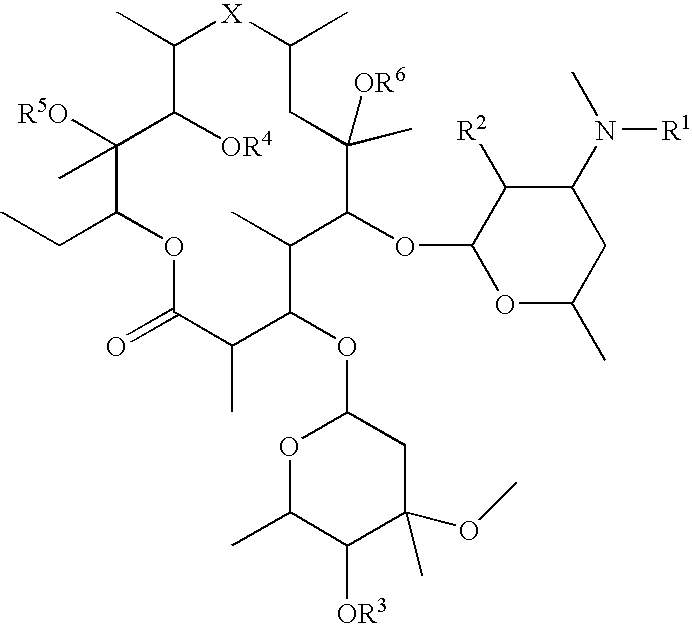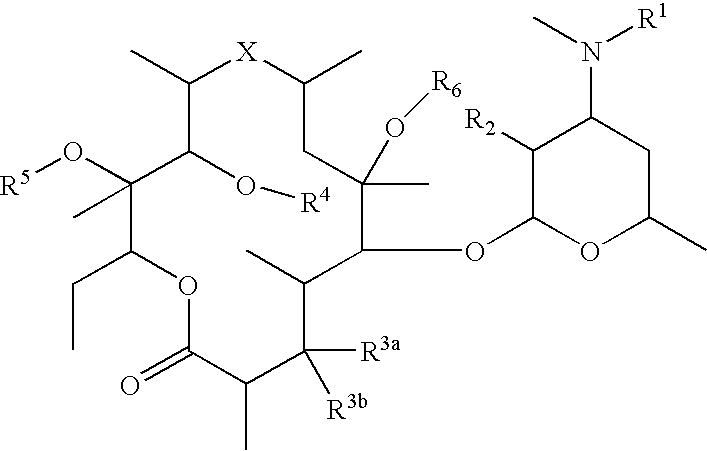Conjugates of biologically active compounds, methods for their preparation and use, formulation and pharmaceutical applications thereof
- Summary
- Abstract
- Description
- Claims
- Application Information
AI Technical Summary
Benefits of technology
Problems solved by technology
Method used
Image
Examples
example 1
Determination of Drug Uptake
[0653] Uptake of Compounds
[0654] Freshly drawn heparinised blood or buffy coat preparations are used for the determination of immune cell partition ratios. Buffy coat preparations are preferred. These may be obtained from donor blood by simple centrifugation of whole blood (4795 g for 10 minutes). Following centrifugation, plasma is collected from the surface, after which immune cells are expressed from the donor bags along with the erythrocytes lying immediately below the leukocyte layer. This ensures high yields and a sufficient population of erythrocytes for partition. 5 ml of the resulting cell suspension are dispensed into T25 culture flasks. Substrates are added to a final concentration between 1 and 10 .mu.M and the suspensions incubated at 37.degree. C., in a 5% CO.sub.2 atmosphere. For analysis of uptake kinetics, samples are withdrawn at 0, 2, 5, 10, 30, 60, 90, 180, or 240 min after substrate addition. For screening purposes, samples are taken ...
example 2
Compound 4
[0663] 8
[0664] A solution of 420 mg of simvastatin in 3 ml of dichloromethane was treated with 110 mg of succinic anhydride and 10 mg of DMAP. After 36 h, 210 mg of EDCI and 600 mg of Compound 2 was added under stirring. After 1 h, the mixture was passed through a pad of silica gel, eluting with chloroform:isopropanol:methanolic ammonia (30:1:1) to yield Compound 4 as an off white solid (440 mg; 40% yield). TLC: R.sub.f 0.38 (chloroform:isopropanol:methanolic ammonia (30:1:1)). MS: M.sup.+ 1090.
example 3
Compound 5
[0665] 9
[0666] A solution of 850 mg of indinavir in 5 ml of dichloromethane was treated with 152 mg of succinic anhydride and 34 mg of DMAP. After 36 h, 300 mg of EDCI and 585 mg of Compound 2 was added under stirring. The reaction mixture was stirred overnight at room temperature. At this point the mixture was concentrated in vacuo and passed through a pad of silica gel, eluting with chloroform:isopropanol:methanolic ammonia (30:1:1) to yield Compound 5 as an off white foam (500 mg; 30% yield). TLC: R.sub.f 0.54 (chloroform:isopropanol:methanolic ammonia (30:1:1)). MS: M.sup.+ 1284.
PUM
| Property | Measurement | Unit |
|---|---|---|
| Mass | aaaaa | aaaaa |
| Molar density | aaaaa | aaaaa |
| Molar density | aaaaa | aaaaa |
Abstract
Description
Claims
Application Information
 Login to View More
Login to View More - R&D
- Intellectual Property
- Life Sciences
- Materials
- Tech Scout
- Unparalleled Data Quality
- Higher Quality Content
- 60% Fewer Hallucinations
Browse by: Latest US Patents, China's latest patents, Technical Efficacy Thesaurus, Application Domain, Technology Topic, Popular Technical Reports.
© 2025 PatSnap. All rights reserved.Legal|Privacy policy|Modern Slavery Act Transparency Statement|Sitemap|About US| Contact US: help@patsnap.com



